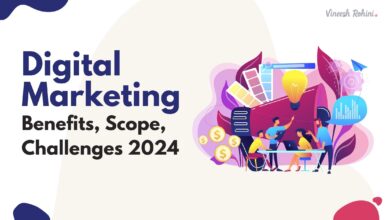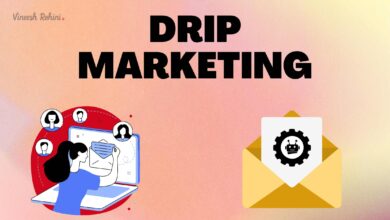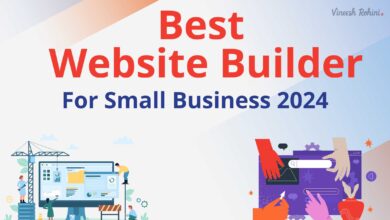What are the 7 P’s of digital marketing ?
What is a Marketing Mix?
Marketing mix is a ramification of marketing tools that consist of several areas of awareness that can be combined to create a complete plan. The term refers to a classification that began as the 4 P’s: product, price, placement, and promotion, and has been expanded to Product, Price, Promotion, Place, People, Packaging, and Process.
What are the 7 Ps of Marketing?
The 4 Ps marketing mix idea (later known as the 7 p’s of marketing) was delivered with the aid of Jerome McCarthy in his e book: “simple marketing: a managerial technique”. It refers back to the thoughtfully designed mixture of techniques and practices a agency uses to drive enterprise and successful product marketing. First of all 4, those factors have been product, price, area and promotion, which have been later accelerated by means of consisting of people, packaging and technique. These are now considered to be the “7 p’s” mix elements.
It can be difficult for a small business owner or marketing supervisor to understand how to establish a completely unique promoting proposition or to reach the proper customers, specially on new structures like the internet, with digital marketing.
Luckily, the 7 Ps of marketing give you a framework to apply in your marketing planning and important approach to efficiently sell in your target marketplace.
You can also take into consideration factors of the mixture on your day to day marketing decision making manner with the purpose to attract the right audience to efficaciously market to via your marketing campaigns.
The 7 elements of the marketing mix consist of the subsequent:
1. Product (or Service)
Your patron only cares approximately one issue: what your services or products can do for them. Because of this, prioritize making your product the best it could be and optimize your product traces therefore. This approach is called “product-led marketing.” in a marketing mix, product considerations involve each aspect of what you’re looking to sell. This includes:
- Design
- Quality
- Features
- Options
- Packaging
- Market positioning
2. Price
Many elements go right into a pricing version. Brands may additionally:
- Price a product higher than competitors to create the impression of a higher-quality offering.
- Price a product similar to competitors, then draw attention to features or benefits other brands lack.
- Price a product lower than competitors to break into a crowded market or attract value-conscious consumers.
- Plan to raise the price after the brand is established or lower it to highlight the value of an updated model.
- Set the base price higher to make bundling or promotions more appealing.
3. Promotion
Promotion is the part of the marketing mix that the general public notices maximum. It consists of television and print marketing, content marketing, coupons or scheduled reductions, social media techniques, email marketing, display ads, digital techniques, marketing communication, search engine marketing, public members of the family and greater.
A majority of these promotional channels tie the entire marketing blend together into an omnichannel method that creates a unified experience for the client base. For example:
- A customer sees an in-store promotion and uses their phone to check prices and read reviews.
- They view the brand’s website, which focuses on a unique feature of the product.
- The brand has solicited reviews addressing that feature. Those reviews appear on high-ranking review sites.
- The customer buys the product and you’ve sent a thank you email using marketing automation.
4. Place
In which will you promote your product? The same marketplace research that informed your product and rate selections will inform your placement as nicely, which is going past physical locations. Here are a few considerations on the subject of location:
- Where will people be looking for your product?
- Will they need to hold it in their hands?
- Will you get more sales by marketing directly to customers from your own e-commerce website, or will buyers be looking for you on third-party marketplaces?
- Do you want to converse directly with your customers as they purchase, or do you want a third party to solve customer service issues?
5. People
Human beings refers to absolutely everyone who comes in contact together with your consumer, even indirectly, so ensure you’re recruiting the exceptional expertise at all tiers—no longer simply in customer service and income force.
Right here’s what you may do to make sure your peoples are making the right impact for your clients:
- Develop your marketers’ skills so they can carry out your marketing mix strategy
- Think about company culture and brand personality.
- Hire professionals to design and develop your products or services.
- Focus on customer relationship management, or CRM, which creates genuine connections and inspires loyalty on a personal level.
6. Packaging
A employer’s packaging catches the eye of recent consumers in a crowded market and reinforces price to returning clients. Right here are a few approaches to make your packaging paintings tougher for you:
- Design for differentiation. A good design helps people recognize your brand at a glance, and can also highlight particular features of your product. For example, if you’re a shampoo company, you can use different colors on the packaging to label different hair types.
- Provide valuable information. Your packaging is the perfect place for product education or brand reinforcement. Include clear instructions, or an unexpected element to surprise and delight your customers.
- Add more value. Exceed expectations for your customers and give them well-designed, branded extras they can use, like a free toothbrush from their dentist, a free estimate from a roofer, or a free styling guide from their hairdresser.
7. Process
Prioritize methods that overlap with the client revel in. The extra specific and seamless your approaches are, the greater easily your workforce can carry them out. If your team of workers is not centered on navigating strategies, they’ve more attention available for clients—translating immediately to private and exceptional client reports.
A few procedures to recall:
- Are the logistics in your main distribution channel cost-efficient?
- How are your scheduling and delivery logistics?
- Will your third-party retailers run out of product at critical times?
- Do you have enough staff to cover busy times?
- Do items ship reliably from your website?



